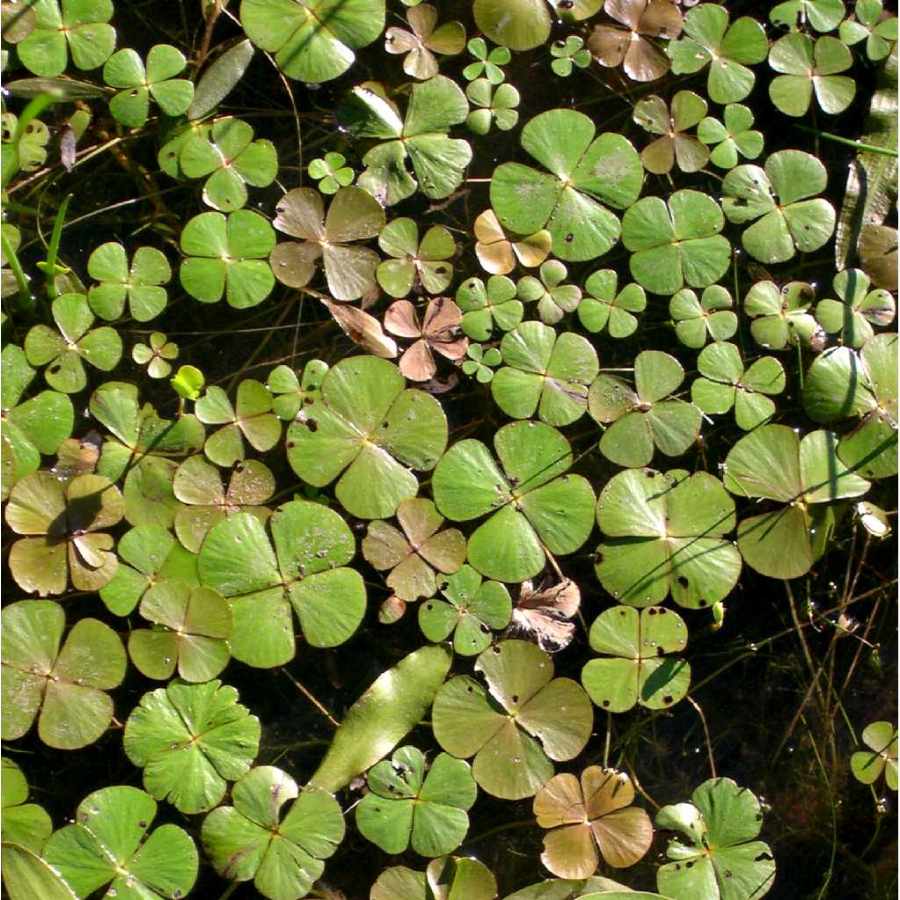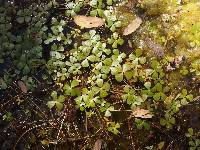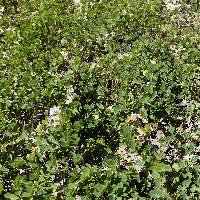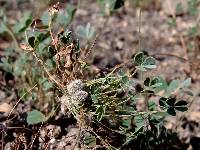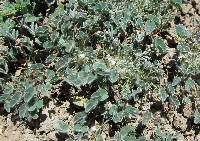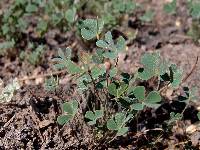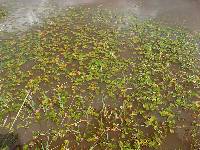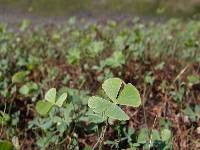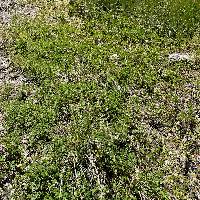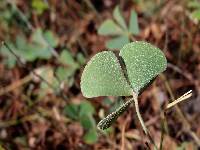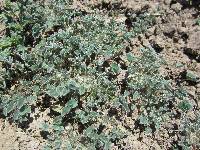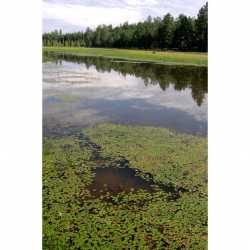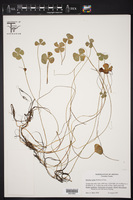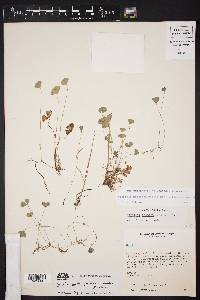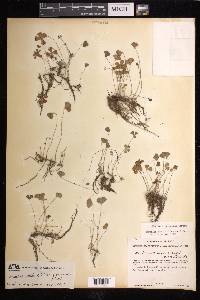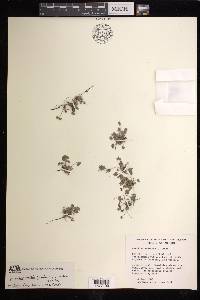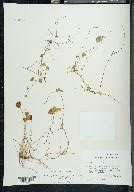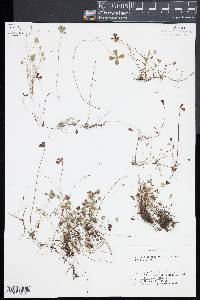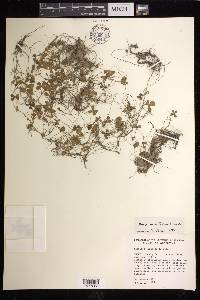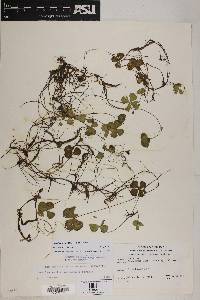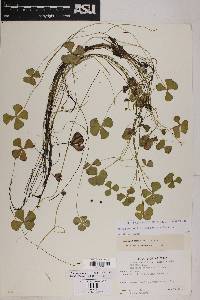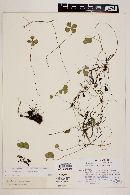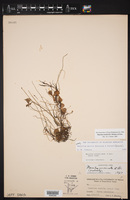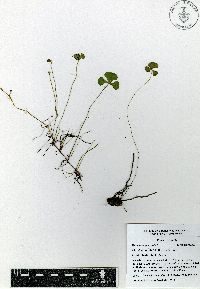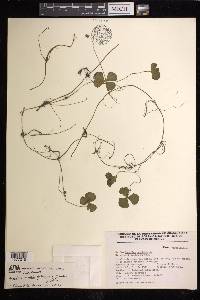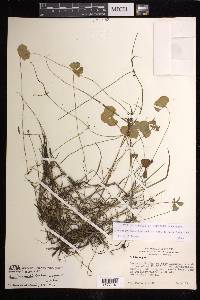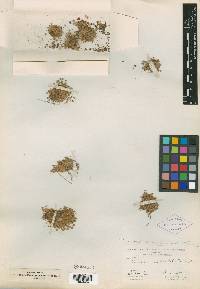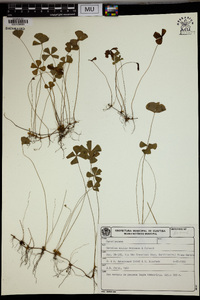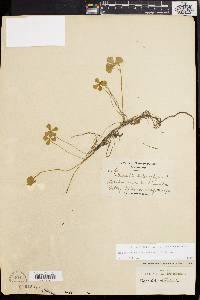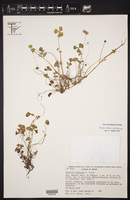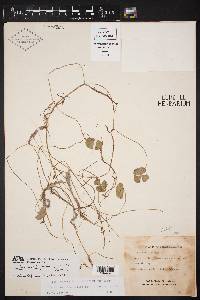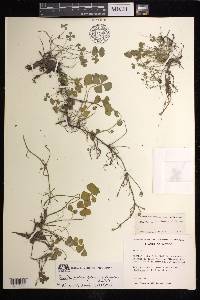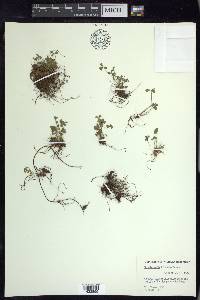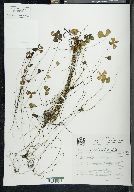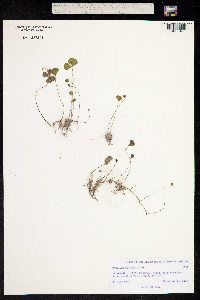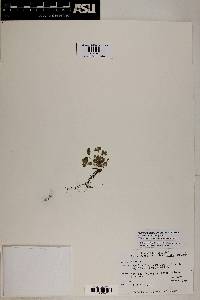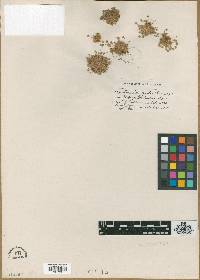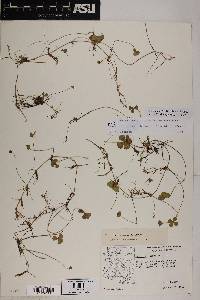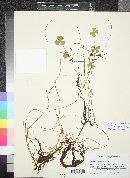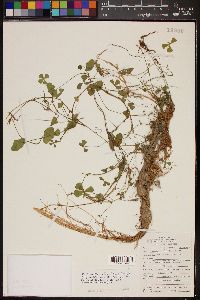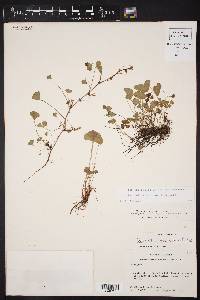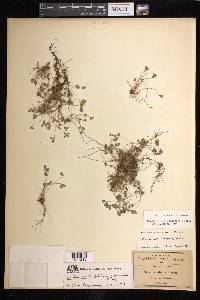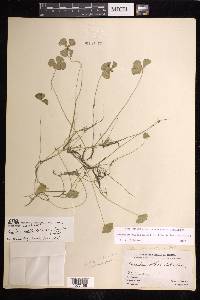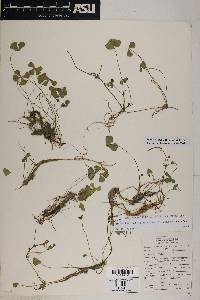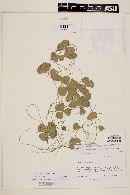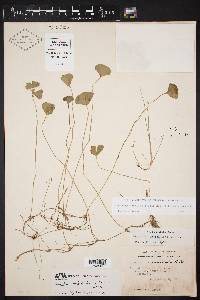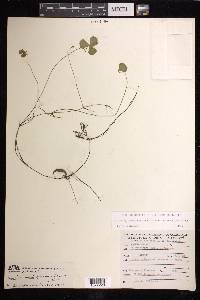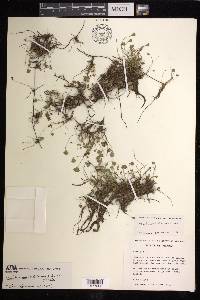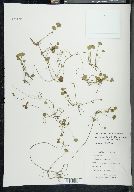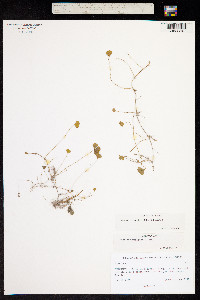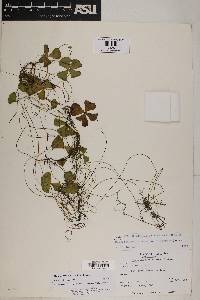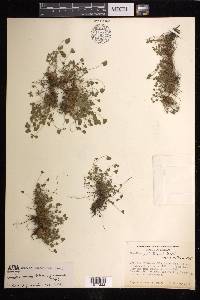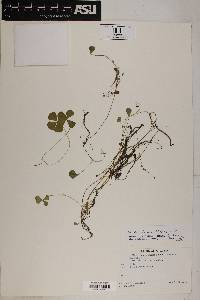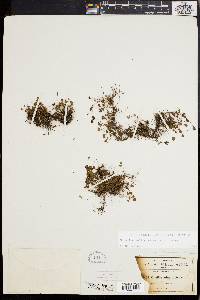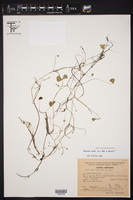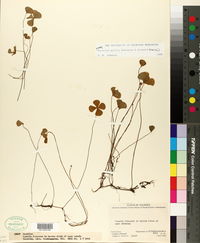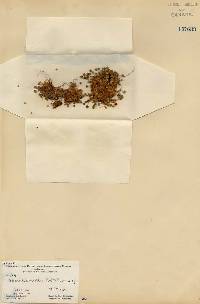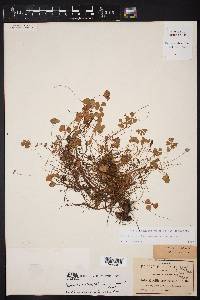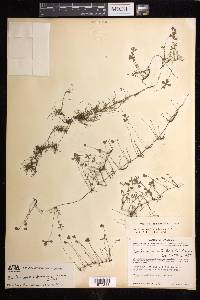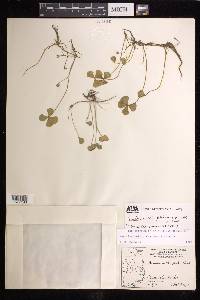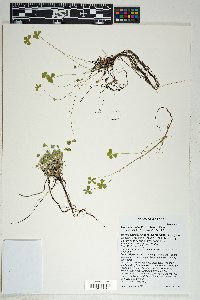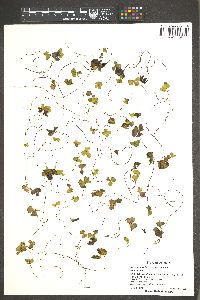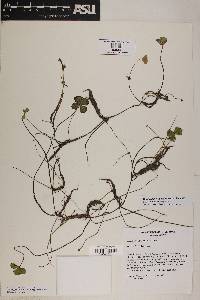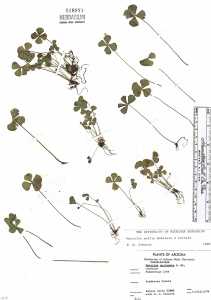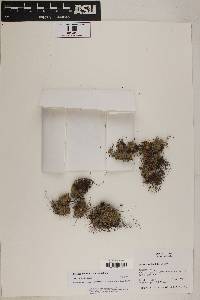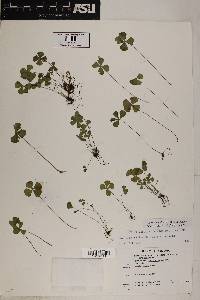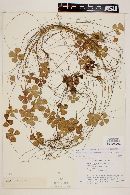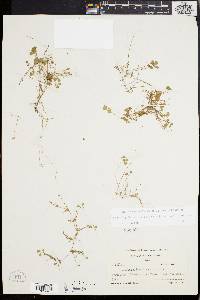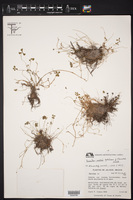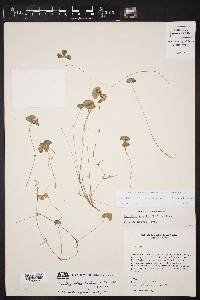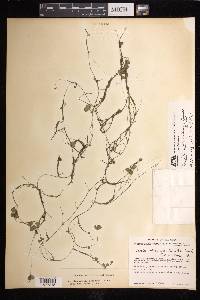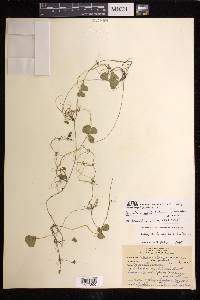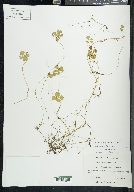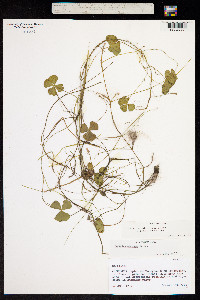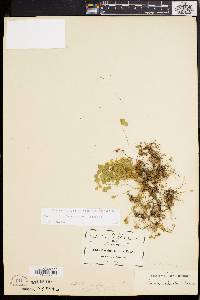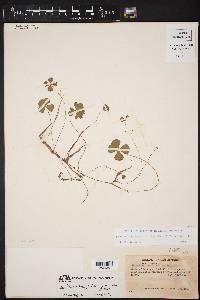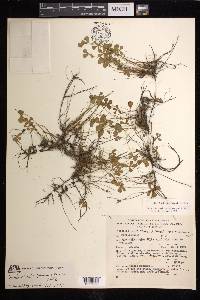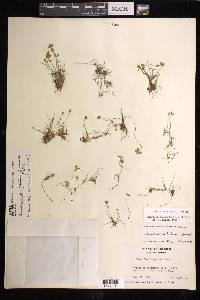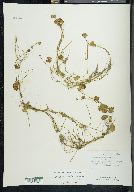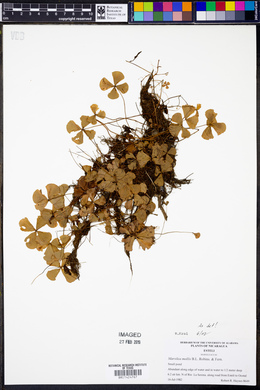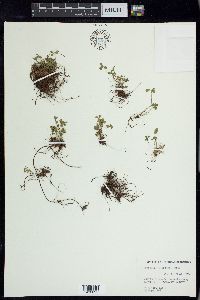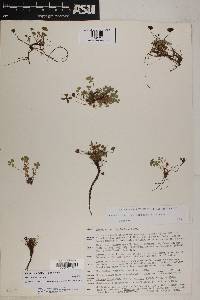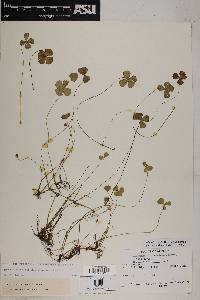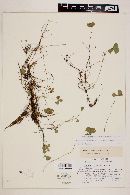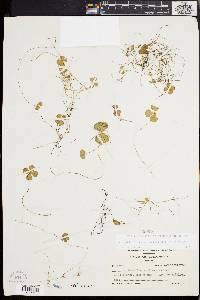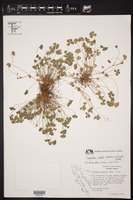
|
|
|
|
Family: Marsileaceae
Chihuahuan Water-Clover, more...Chihuahuan waterclover
|
Plants forming dense clones. Roots arising at nodes. Petioles 1--14 cm, sparsely erect-pilose to glabrous. Pinnae 2--17 × 1--16 mm, densely pilose abaxially, sparsely pilose adaxially. Sporocarp stalks erect, unbranched, attached at base of petiole, or rarely up to 3.8 mm above it, not hooked at apex, 1.7--6.7 mm. Sporocarps nodding or perpendicular, 2.4--5 × 2--3 mm, 1.3--1.7 mm thick, ovate in lateral view, covered with needlelike hairs with spreading tips when young but soon glabrate; raphe 0.6--1.4 mm, proximal tooth 0.2 mm, blunt, or absent, distal tooth 0.2 mm or absent. Sori 10--14. Sporocarps produced spring--fall (May--Oct). On mud and in shallow water, in ponds and marshes; 1300--2000 m; Ariz., Tex.; Mexico; South America. The name Marsilea mexicana A. Braun has sometimes been misapplied to this species. The red or brown streaks on the pinnae, reported as characteristic of Marsilea mollis by a number of authors, are found on floating leaves of nearly all species in the genus (D. M. Johnson 1986).
PETIOLES: 1-20 cm long, glabrous or sparsely appressed-hairy. LEAFLETS: 4- 17 mm long, broadly wedge-shaped, broadly rounded at the tips, symmetrically cuneate, sparsely pilose adaxially, moderately to densely pilose abaxially, the lateral margins straight or nearly so. SPOROCARPS: solitary, appearing somewhat nodding, produced from the tip of short peduncle attached at or rarely just above the petiole base, (2.4-)3-5 mm long, 2-3 mm wide, oblong-ovate in outline, the tooth distal to the stalk tip, absent or less commonly poorly developed, less than 0.2 mm long, bluntly triangular (Fig. 2C). MEGASPORES: 460-580 μm in diameter (excluding the apical papilla). MICROSPORES: 60-80 μm in diameter. 2n = 40. NOTES: Shallow water and margins of ponds, lakes, stock tanks, cienegas, and less commonly streams and marshy meadows: Coconino, Gila, Graham, Mohave, Navajo, Pima, Santa Cruz, Yavapai cos. (Fig. 1A); 1350-2250 m (4400-7400 ft); AZ, TX; s to Argentina. REFERENCES: Windham, M. D. and G. Yatskievych. 2009. Vascular Plants of Arizona: Marsileaceae. CANOTIA 5 (1): 30-33. General: Perennial, aquatic or amphibious, rhizomatous and forming dense colonies; rooting at nodes. Leaves: Compound, resembling a 4-leaf clover; leaflets wedge- shaped, 2-17 mm long, 1-16 mm wide, hairy; petiole 1-14 cm long, sparsely hairy to glabrous. Sporangia: Sporocarps borne on erect, unbranched stalks 1.7–6.7 mm long from base of petioles, attached laterally to stalk apex, tip of stalk often protruding as bump or tooth (proximal tooth), occasionally with a second bump (distal tooth) slightly higher on the sporocarp edge; sporocarp 2.5–5 mm long, 2–3 mm wide, 1.3–1.7 mm thick, densely hairy when young, becoming nearly glabrous with age, dehiscing into 2 valves. Ecology: On mud and in shallow water of ponds and marshes; 4300-7000 ft (1300- 2100 m); Cochise, Coconino, Graham, Navajo, Pima, and Santa Cruz counties; southwestern U.S. and Mexico. Notes: Marsilea vestita (hairy waterclover)[=M. mucronata] also occurs in our area, although based on collections it is apparently less common than M. mollis. Species identification is virtually impossible without fertile material, the distinction being that M. vestita has a sharp distal tooth 0.4–1.2 mm long on the sporocarp, whereas in M. mollis the distal tooth is lacking or less than 0.4 mm long, and blunt. The common name, waterclover, refers to the resemblance of the leaves to those of clover (Trifolium spp.). Sources: Springer et al. 2009 Springer et al. 2009 Common Name: Chihuahuan waterclover General: Perennial, aquatic or amphibious, rhizomatous and forming dense colonies; rooting at nodes. Leaves: Compound, resembling a 4-leaf clover; leaflets wedge- shaped, 2-17 mm long, 1-16 mm wide, hairy; petiole 1-14 cm long, sparsely hairy to glabrous. Sporangia: Sporocarps borne on erect, unbranched stalks 1.7-6.7 mm long from base of petioles, attached laterally to stalk apex, tip of stalk often protruding as bump or tooth (proximal tooth), occasionally with a second bump (distal tooth) slightly higher on the sp Ecology: On mud and in shallow water of ponds and marshes; 4300-7000 ft (1300- 2100 m); Cochise, Coconino, Graham, Navajo, Pima, and Santa Cruz counties; southwestern U.S. and Mexico. Notes: Marsilea vestita (hairy waterclover)[=M. mucronata] also occurs in our area, although based on collections it is apparently less common than M. mollis. Species identification is virtually impossible without fertile material, the distinction being that M. vestita has a sharp distal tooth 0.4-1.2 mm long on the sporocarp, whereas in M. mollis the distal tooth is lacking or less than 0.4 mm long, and blunt. The common name, waterclover, refers to the resemblance of the leaves to those of clover (Trifolium spp.). Editor: ERI |
|
|
|
This project was made possible in part by the Institute of Museum and Library Services [MG-70-19-0057-19].
Powered by Symbiota

